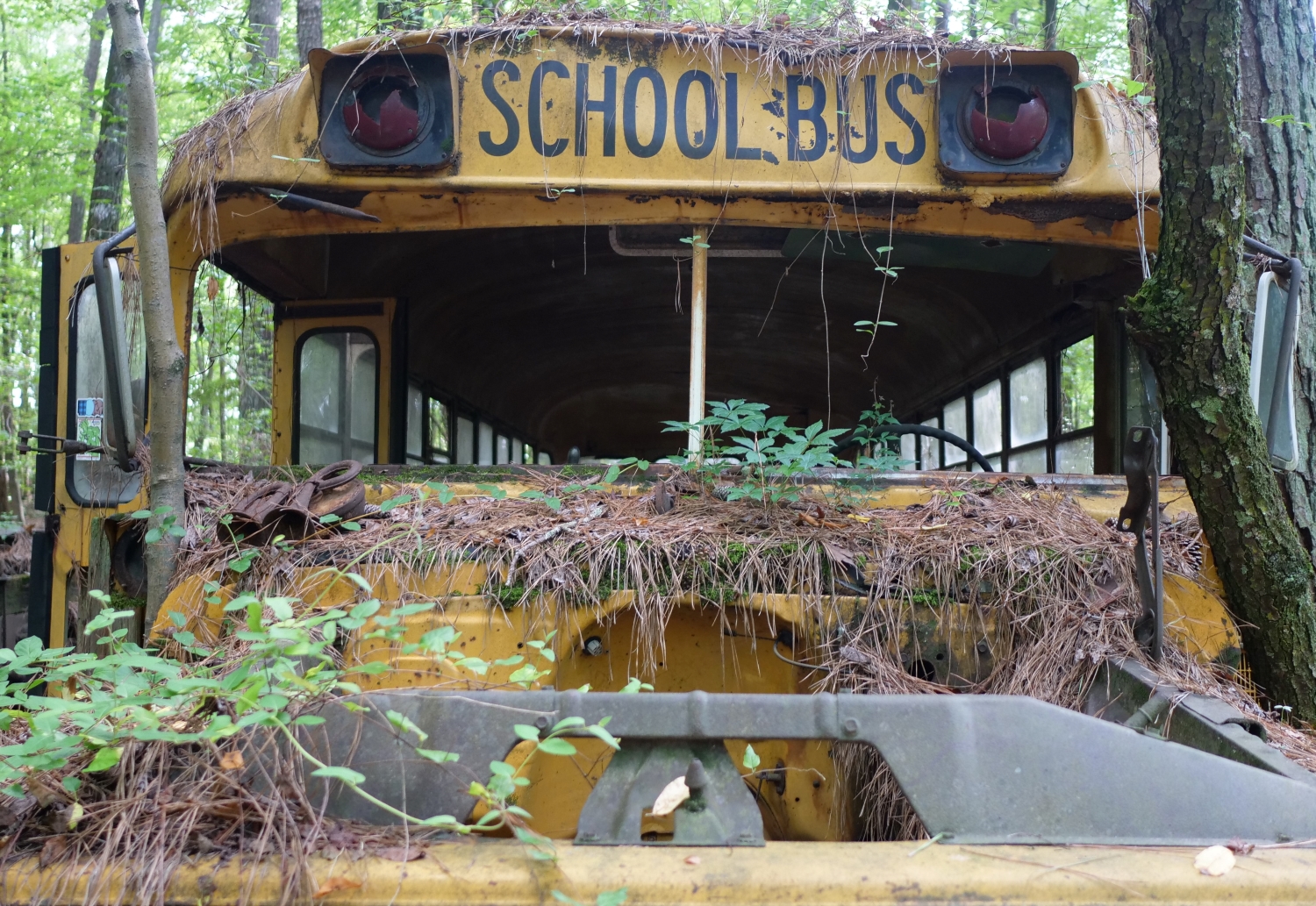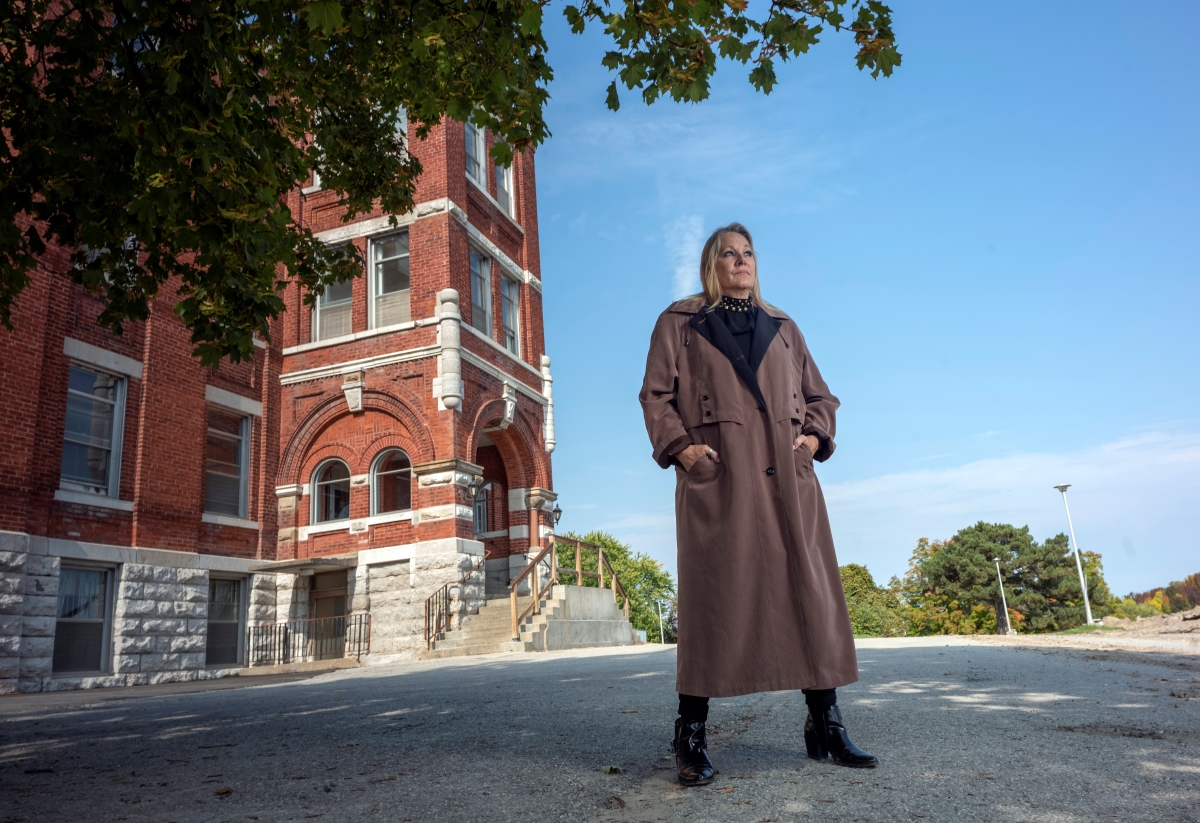What happens to the waste that’s too big to fit in a trash can, or even a landfill? Scrap, which premiered at this year’s Hot Docs festival, sheds light on the afterlives of large objects once we’ve decided to chuck them. While the subjects of her latest doc are weighty, director Stacey Tenenbaum doesn’t want Scrap to bonk viewers over the head with an environmental message. The atmospheric documentary washes over you with surprising style and beauty.
The seed of Scrap was planted when Tenenbaum was trudging in the dirt of a Russian rocket graveyard ten years ago. She was scouting a potential location for Trashopolis (2010–11), a docuseries about how different cities dealt historically with their garbage. The Scrap director was struck by the oddly charming enormity of the sprawling mass of space waste in Moscow.
“We never ended up filming there, but the idea of tracing what happens to massive objects after they get discarded started to percolate,” says Tenenbaum. “I knew it was really visually beautiful, so that’s when I started researching.”
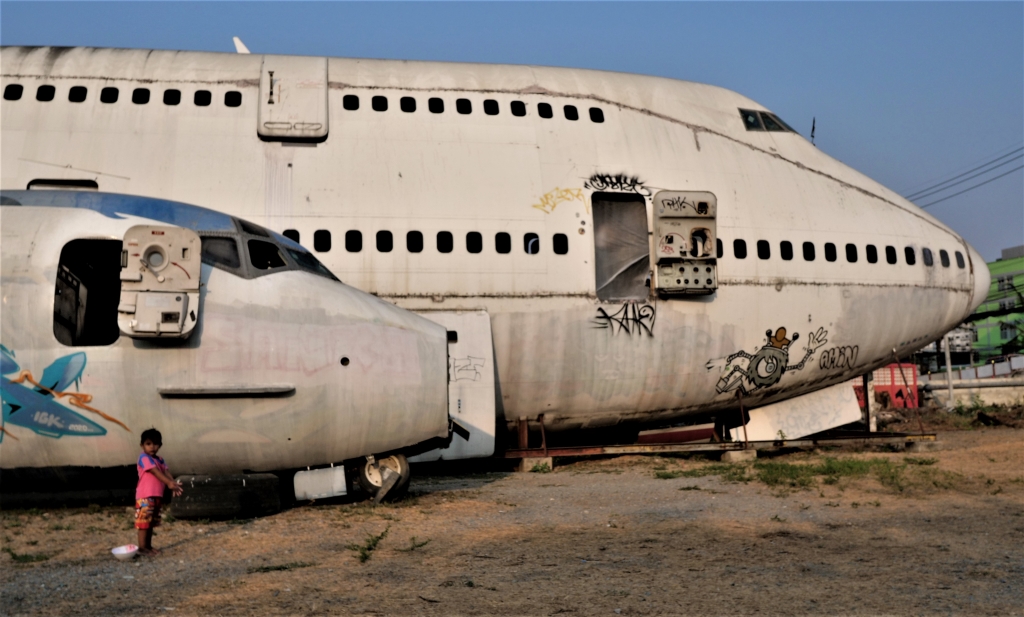
It took Tenenbaum two years to narrow down locations for Scrap. The film goes between a car-part jungle in Georgia, decaying airplanes in Thailand, a prairie artist’s scrap-metal workshop, a telephone booth graveyard in England, a shipyard in Spain, an e-waste processing facility in India, and a lot filled with retired streetcars in the United States. The film is heavy with coasting drone shots that reveal the sheer size and beauty of these junk piles. While Tenenbaum realizes drone shots have become tired in many cases, she says they serve a purpose in Scrap.
“You need to see these graveyards from the sky. They’re huge, and spread out over big pieces of land,” explains Tenenbaum. “I think the way I was using the drones was really story-driven.”
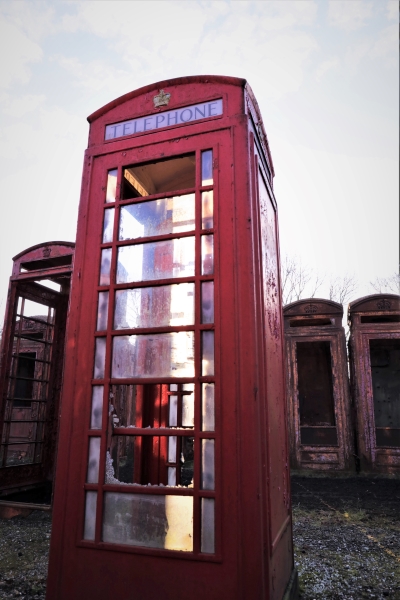
While these massive inanimate objects and sprawling wastelands are stars in Scrap, so are the people who live there. Tenenbaum’s previous films Pipe Dreams (2019) and Shiners (2017) were portraits of people in their element. Although Scrap is named after objects, it has a similar eye for deeply human stories. Tenenbaum set out to Thailand thinking she’d uncover why tourists were drawn to the airplane graveyards, but found it wasn’t much deeper than it being an Instagram photo op. Instead, her doc finds a woman and her grandchildren who live in the plane scraps, running the tourist trap. “I don’t like when they call it a graveyard,” the woman in the film says. “We’re living people, not spirits.”
“As I researched, I started finding out about the people who lived in these places,” says Tenenbaum. “The scrap is one of the characters in the film, but it became more about the people and why they’re attached to the scrap.”
A young child hoists a tourist aboard the rickety skeleton of a 747. The children welcome visitors into their playground and home, flipping through bills like little salespeople. A woman in a flowery shawl poses for a picture against the graffitied side of a plane part. Even though they call an airplane home, the grandmother quips that she has no desire to ever take a flight.
“None of the tourists really bother to find out much about her life, they’re just there to see the planes,” says Tenenbaum. “From the beginning, I really felt that her story fit in with the architect who was repurposing the ship. It’s another way of repurposing something that someone’s thrown away.”
It makes sense, then, that the film travels from Thailand’s abandoned airfield to Spain, where a team of labourers carefully begins to slice an abandoned ship into pieces. They nod, listening to an architect’s meticulous plans to rebuild the boat scraps into an ultra-futuristic church in Korea. Tenenbaum had been waiting to fly out on a moment’s notice to wherever the architect could find a suitable ship for the project. When he found the perfect wreck in Spain, the film crew flew out to shoot the dismantling in February 2020.
“The scrap character I was most attached to was the boat, because we really spent a lot of time with it,” says Tenenbaum. “There was a lot from an early scout that wasn’t filmed. The clothes from the old sailors were in there, and the old telephone and maps.”
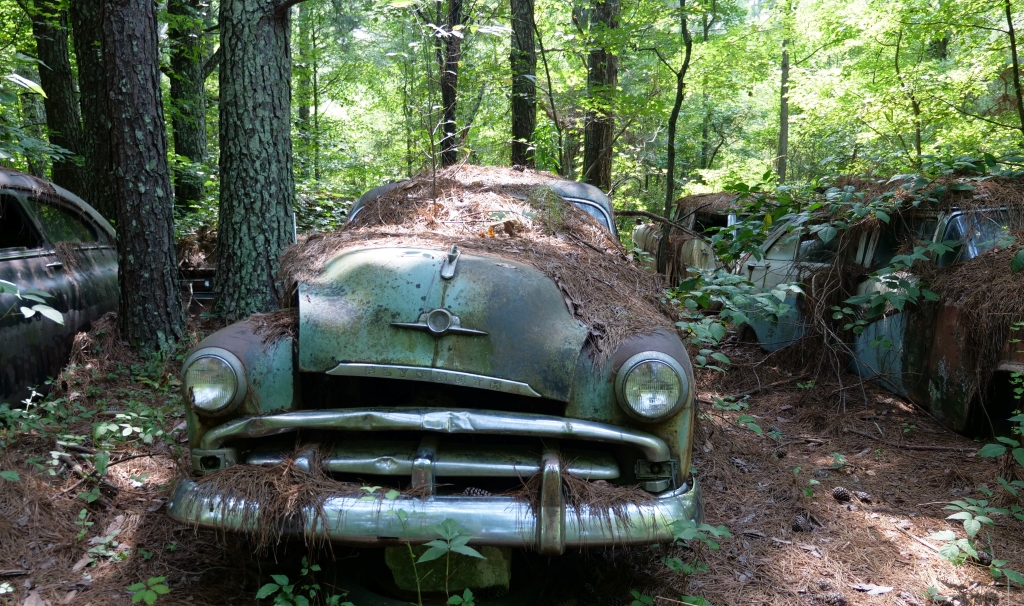
Scrap throws a wrench in the unsettlingly fast pace at which we toss objects on a whim. Tenenbaum talks about how she cherishes even the most utilitarian of items, like her grandmother’s strainer. “I use it every day,” she says. “It reminds me of her, even though it’s just a strainer.” You can even trace threads of this ethos back to Shiners. “A big part of shoe shining is buying quality shoes, taking care of what you have, and keeping it for a long time,” says Tenenbaum.
A conscious theme in Scrap is repurposing, renewing, and giving overwhelmingly large scrap metal a new life. Ed Metka collects retired streetcars in order to restore them and return them to the tracks. In another sequence, a graveyard of weathered iconic red telephone booths is fixed up one by one. No matter how large an object looms, Scrap imagines a beautiful future for it. It’s not always about bringing something back to its former glory either. Much like the shipwreck-turned-church, one of the best ways to honour an old item is to make something new out of it. John Lopez, a rural artist, welds a chain-link beard on a statue of a buffalo made of the metal left behind on old farms.
“I knew I wanted to find people who were upcycling,” says Tenenbaum. “I love artists, so finding that they were making something out of scrap was definitely something that I wanted to do.”
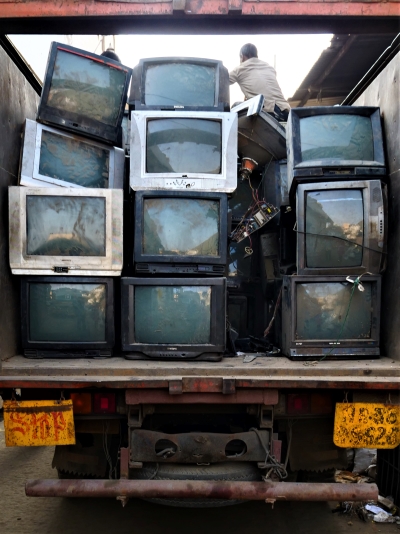
Tenenbaum even worked with a composer, Ramachandra Borcar, who scored the film using the sounds of scrap metal. Every chime and swoosh in the film’s gentle soundtrack was made without the use of traditional instruments. The resulting music is innovative but catchy—you wouldn’t know it was made with found objects at all.
“He went to this scrap yard late at night and recorded all of these musical sounds with different pieces of metal, different pieces of glass,” Tenenbaum explains. “He went into an old arcade and recorded the sounds that electronics make for the e-waste section. He even went to a props house in LA that had a little plane, and made music on that for the plane section.”
Tenenbaum made Scrap knowing the average person likely can’t do much to prevent humongous objects from being tossed. That’s why she shot a segment at an e-waste processing factory in India. It’s a huge problem for small items, and people can actually do something about it in their day-to-day lives. She introduces us to Saumya Khandelwal, a local photojournalist who documents environmental decline and the waste industry. “When there are things that bother me, the only thing I can do is photograph it and put it out,” Khandelwal says in the film.
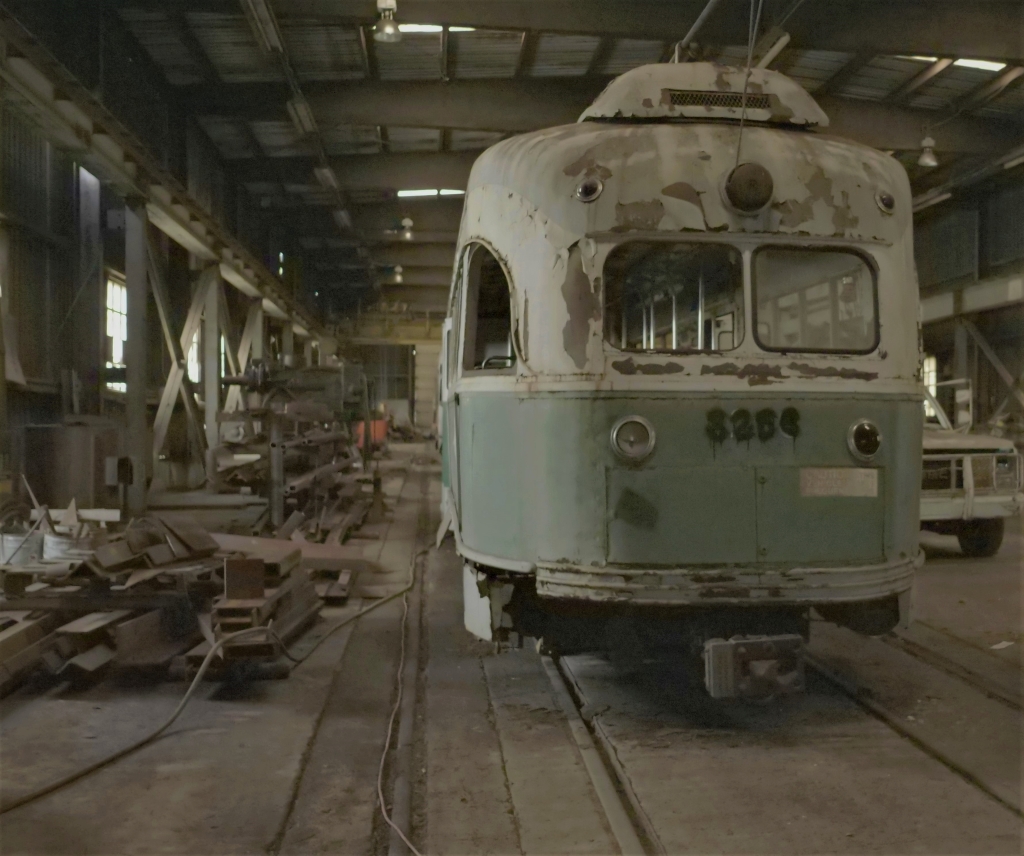
While Tenenbaum is in the same line of work, Scrap goes a step beyond just documenting a problem. It also offers up solutions. For World Recycling Day, the film is teaming up with repair cafes to get people fixing the objects they already own in tandem with screenings. The production has also partnered with the Canadian National Institute for the Blind to collect old cell phones, tablets, and other electronics at screenings across the country. A similar initiative is in the works for showings in the United States.
“They wipe the phones clean and then put on applications for people with sight impairment to be able to navigate the world,” says Tenenbaum. “It’s about repurposing rather than just recycling. I think recycling is a bit of a passé concept. I believe in repurposing, reusing, and upcycling.”
With Scrap, Tenenbaum is able to wrestle the elephant in the room without letting it trample the audience. Environmental docs of the future, especially those looking to inspire action, would do well to follow in its footsteps.




